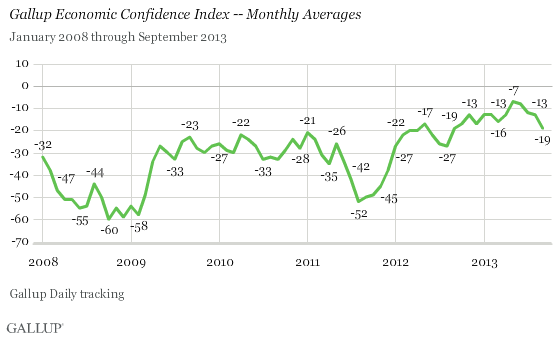With the federal government shut down for a 10th consecutive day, conservative political operative Grover Norquist’s dream of a government small enough to drown in a bathtub has been largely realized. For the majority of Americans who don’t view the federal government as an ideological arch-nemesis, however, it’s no time to celebrate.
From disruptive economic ripples, to limits on food programs for the poor, to hundreds of thousands of federal workers who have been furloughed, the shutdown has had a ubiquitous, negative impact on the day-to-day lives of countless Americans.
It’s not easy to narrow down the most damaging consequences of the shutdown. Nevertheless, some of the stories to emerge are particularly disheartening.
Here are five of the worst effects to come from the U.S. government’s partial closure after a temper tantrum by House Republicans.
Photo: MudlapDC via flickr
The U.S. Economy Will Lose Billions Of Dollars
It’s impossible to measure the true monetary cost of the government shutdown. There are simply too many factors to consider when accounting for money lost. For example, the hundreds of millions of dollars that U.S. National Parks bring in, the lost value of work that isn’t done during a shutdown, and — not least — consumer confidence, which plummets during periods of government dysfunction.
Here’s a graph from Gallup that shows how consumer confidence was affected by the debt ceiling debate in 2011.

Without taking the above factors into account, the Office of Management and Budget estimated that the two government shutdowns of the 1990s cost the U.S. $1.4 billion. If this number was adjusted for inflation, it would be right around 2 billion of today’s dollars.
U.S. Nuclear Regulatory Committee Workers Furloughed
The agency that oversees keeping our country safe from nuclear catastrophe was set to furlough over 3,000 workers Thursday because of the government shutdown.
Inspection of nuclear materials and waste licenses will be put on hold, as will “emergency preparedness” exercises.
Chairman of the NRC, Allison Macfarlane, is not happy with the need to furlough workers. “Despite our best hopes, the NRC on Thursday will be joining the rest of the federal government in shutting down due to a lapse in appropriations,” Macfarlane wrote on NRC’s blog. “I believe we all share a deep disappointment that this action has become necessary.”
“We are mindful of the impact the shutdown will have on the public, our licensees, our staff and contractors and others who count on us,” she continued. “We hope this interruption is as brief as possible and we look forward to being back at our desks.”
Photo via Wikimedia
Women Who Rely On Domestic Violence Shelters Are In Danger
Cuts to programs like WIC and Head Start have been widely reported to show the shutdown’s effect on the economically disadvantaged. But, as The Nation recently reported, women who rely on domestic violence shelters are now in danger of being pushed out.
“We’re two weeks from programs closing their doors,” Cindy Southworth, vice president of the National Network to End Domestic Violence, said.
Domestic violence shelters around the country rely on now-shuttered government agencies for funding. The shelters have been cut off from grant management systems and grant managers themselves, which makes it impossible to receive federal funding until a budget is passed.
To make matters worse, shelters in rural and particularly poor areas without a strong donor base will be especially hurt by the shutdown.
Photo via Wikimedia
Veterans May Not Receive Benefits If The Shutdown Continues
According to the Department of Veterans Affairs, if the shutdown lasts more than two or three weeks, it will not have enough money to continue to pay pensions and disability compensation to veterans.
The cut could be particularly far-reaching. In the case of a shutdown that extends into late October, $6 billion in compensation would not reach about 5 million veterans and their families.
While monetary benefits have yet to stop flowing to veterans, they’ve already been adversely affected by the government shutdown. Veterans Affairs Secretary Eric Shinseki recently told lawmakers that the U.S. Department of Labor has shut down the majority of its “VETS” program, which provides counseling services to veterans. The Small Business Administration has also closed centers that are designed to help veterans start their own businesses.
Photo via Wikimedia
Kids With Cancer Are Denied Treatment
The National Institutes of Health (NIH) saw three-quarters of its staff furloughed under sequestration cuts and now the government shutdown. As a direct result of these furloughs, children with cancer are not receiving treatments through clinical trials at NIH.
Clinical trials are typically sought by cancer patients who have tried other forms of treatment, but have had no success. Before the shutdown, NIH would typically accept 200 cancer patients—including children—a week for clinical trial treatment. This week, NIH accepted just 12 critically ill patients for clinical trials.
Photo via Wikimedia













